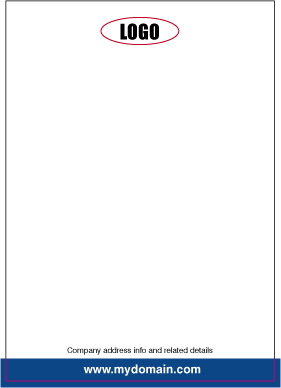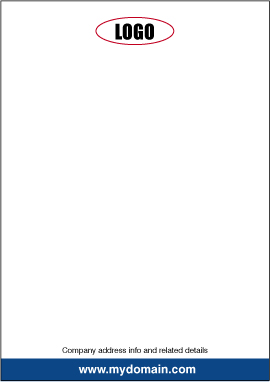Free Business Cards
Why would you pay good money for business cards when some companies are giving away free business cards ?
 It’s the same product isn’t it? Top class quality and finish printed on a professional heavyweight board? A card I can be proud of when handing out to prospective clients?
It’s the same product isn’t it? Top class quality and finish printed on a professional heavyweight board? A card I can be proud of when handing out to prospective clients?
Well, all we would say is . . . tread carefully.
A business card reflects how you value your corporate identity and is just as important for one-man startups as it is for the top commercial brands we’re all familiar with.
Starting out in business is a costly exercise and it’s too easy to fall into the trap of getting started ‘on the cheap’. If you’re serious about your company image then read on . . .
Professional Business Cards
A ‘professional’ business card is usually printed on a heavyweight 350gsm to 400gsm quality board. Often this may be further enhanced by lamination (a micro-thin plastic that sandwiches your card). The card suddenly has that waxy feel that smacks of quality. Due to the lamination process your artwork is also enhanced and the end result can look stunning.
The card will likely be printed using a commercial lithographic process (inks) and not with a toner-based process such as used in a digital machine. One main benefit for this (apart from a superior quality print) is that colour consistency across your whole stationery range (letterheads, compliment slips, order pads, computer forms, printed envelopes/labels etc.) will be much easier to manage when the same printing process is used.
Many people use one company for their business cards, another for their envelopes or whatever and then end up with a range of stationery items that don’t look as though they’ve been printed at the same time due to the colour differences. This is not good news as it looks as though you don’t take your own brand seriously. This could reflect badly on how your company is perceived.
If you’re intending to be in business for the long haul then I really recommend you set aside some time to give your new brand the best possible start as far as brand creation is concerned. There’s plenty of advice around this site guiding you through getting your logo created (an essential part of your company) and how to keep that colour consistency throughout the brand I mentioned earlier.
We print for a number of blue chip clients and the main criteria with all of them (apart from quality, service and reliability) is brand consistency. In other words, their corporate colour has to be maintained at all costs. It’s no good having a range of marketing materials on show (say at a trade exhibition) where they look as though they have been printed by multiple suppliers. In other words, the corporate colours don’t match.
Don’t be fooled into thinking this only relates to larger businesses. Your stationery is often the first thing your prospective client sees and can make or break the decision on whether or not you’re taken seriously.
We’ve all had the handwritten note pushed through our letterbox from a one-man operation offering garden services, hairdressing, window cleaning or whatever. These do serve a purpose for some but far nicer to receive a professionally-printed leaflet, in colour, with a company logo you’ll recognise over time and all information nicely laid out with a contact number and link to a website for more details. It shows they take themselves seriously and are not just a cheap outfit.
So, as far as free business cards are concerned you can probably see where I’m going with this.
Free Business Cards
Your free business cards (which are not free by the way as you need to pay for postage & packing) will be printed on a cheap thin board. To give you an idea of the thickness of card used – if you’ve ever tried to get a sheet of card through a standard inkjet printer you’ll know that it’s usually the thinnest card you can buy that will go through without jamming. This is around the 200gsm mark, and is absolutely useless for a professional business card.
Often printed on the back of the cards (without you knowing until you receive them) will usually be the supplying company’s name which immediately shows anyone you hand the cards out to that you’ve done this on the cheap.
Before I go any further it’s worth pointing out that not all of these types of offers are worthless as there are many small businesses that don’t require professional branding.
When you order your free business cards you will need to pick from a standard design that will probably be in use by hundreds of other companies so from a branding point of view it’s a non-starter. If you’re looking to stand out from the crowd then a stock design really isn’t for you.
I won’t bang on about free business cards as you will have realised by now that although I accept there’s a place for them in the marketplace they just don’t work for many of our clients. We keep some horrific examples in our office just to remind people of the alternatives out there!
Consider your brand
If you’re a new company looking to create your own company identity (brand) or an existing company looking to re-brand then one piece of advise I would give is to list all the possible items on which your brand would be seen. e.g. stationery, clothing, vehicle livery, outdoor signage, exhibition materials, magazine adverts, website, specialist labels, product tags . . . the list goes on.
Give this list to your designer or printer (who may have in-house designers as we do) and you will get a design that works in all the above situations. Think how simple (1 or 2 colours + a very straightforward uncluttered design) many of the top brands are and you’ll realise this simplicity is there for a reason. It’s far easier to control the look of the brand across a multitude of materials the simpler it is.
Some designs can be a real pain to replicate across different materials and usually there is a cost penalty also, which is not good. You want to be making money, not worrying about a rebrand 6 months down the line so getting your corporate image right from the start is an important consideration.
I hope the above is helpful in some way if you’ve been thinking about your image and how to progress it.



Leave a Reply